
Related
Guests
- Doug Peacockwilderness activist and grizzly bear researcher. He is the author of several books on grizzly bears. He was the model for the character Hayduke in Ed Abbey’s The Monkey Wrench Gang.
- Andrea Peacockindependent journalist who has covered Montana politics and western environmental news for several years. She is a former editor of the Missoula Independent and has written for CounterPunch and Mother Jones. She is the author of Libby, Montana: Asbestos and the Deadly Silence of an American Corporation. She also co-authored a book with her husband Doug Peacock titled The Essential Grizzly: The Mingled Fates of Men and Bears.
We speak with environmentalists Doug and Andrea Peacock. Doug Peacock is a longtime naturalist, adventurer and writer. His books include Grizzly Years: In Search of the American Wilderness. He was a close friend of the late writer Edward Abbey. One of Abbey’s most famous characters, Hayduke, from his book The Monkey Wrench Gang, was based partly on Doug Peacock. Andrea Peacock is an independent journalist who has covered Montana politics and western environmental news for several years. [includes rush transcript]
Transcript
AMY GOODMAN: Well, I’m Amy Goodman, here in Bozeman. Juan Gonzalez is in New York. And our guests here are joining us in Bozeman.
Montana is grizzly bear territory. When Lewis and Clark came through the area in the early nineteenth century, there were at least 100,000 grizzlies in this country. Today, the grizzly population is just a fraction of that.
Reports indicate hunters are killing grizzlies in record numbers around Yellowstone National Park, as they move into new places searching for food. Scientists suggest climate change could threaten the bear’s main source of food, whitebark pine trees, because of beetle infestations that are growing worse as winter temperatures get warmer. Yellowstone’s 600 grizzlies were taken off the endangered species list in 2007, but if their death rate remains high, they might be back on that list.
Today, we’re joined by two guests who have worked for years to chronicle and protect the grizzly. Doug Peacock is a longtime naturalist, adventurer and writer. His books include Grizzly Years: In Search of the American Wilderness. He was a close friend of the late writer Edward Abbey. One of Abbey’s most famous characters, Hayduke, from his book The Monkey Wrench Gang, was based partly on Doug Peacock. Doug Peacock was awarded a Guggenheim Fellowship in nonfiction for 2007 for his environmental writing.
Doug’s wife, Andrea Peacock, is also here in the Bozeman studio. She has covered Western environmental news for several years, writing for Mother Jones, CounterPunch and other publications. Together, Doug and Andrea Peacock have co-authored the book The Essential Grizzly: The Mingled Fates of Men and Bears. We also had Andrea in studio yesterday, when she traveled four hours to join us in Missoula to talk about the city in Montana called Libby, the historic trial that’s taking place in Missoula.
We want to welcome you both to Democracy Now! Grizzly bears. Doug, why are grizzlies so important to you?
DOUG PEACOCK: Well, it’s the one animal on this continent that really challenges human beings for that top slot on the food pyramid. You know, they challenge our dominion. They challenge our control. And I think that’s a really healthy relationship, because we, modern humans, somehow think we live apart from those natural systems we evolved from. And with the grizzly bear out there, you know, you have to take that animal quite seriously, because on occasion it does kill people. And, you know, we’ve lived with that condition since our genesis in Africa. And, you know, these few last enclaves, these little remnants of that habitat, we call wilderness, and they still have the grizzly.
AMY GOODMAN: Andrea, how did you get interested?
ANDREA PEACOCK: Well, I met Doug, and grizzlies are a pretty big part of his life. But we decided to work on this book together, and he’s the sort of guy who doesn’t let a couple of facts get in the way of a good story, whereas I’m more of a journalist. So our strengths worked pretty well together.
AMY GOODMAN: What do you mean by “the mingled fates of men and bears”?
DOUG PEACOCK: “Mingled” because I believe, not quite glibly — and I’ve written about this through the course of four books — that our fates really are the same. You know, the grizzly bear is an omnivore who lives in the same habitats humans lived in, you know, right up until we had cities.
And in North America, that’s always been the case. The grizzly bear came over at the same time as humans to this continent, you know, some fifty, thirty thousand years ago — we don’t know exactly when. Bears and humans came down from Alaska into the country, and, you know, a lot of animals died out during the last global warming of, you know, 14,000 years ago. Humans and grizzlies were the two big critters, the two big omnivores, that survived. And I really do believe we do have a common fate. And it’s not because we can’t live without grizzlies. I think that we lose an essential part of our soul, that part that’s going to perhaps help us survive the terrible threats to today, and especially global warming.
JUAN GONZALEZ: Doug Peacock, I’d like to ask you — you are a Vietnam veteran, a medic in Vietnam. And could you talk somewhat about the experience returning from the war and then deciding to spend so much of your life in pursuit and understanding of grizzlies?
DOUG PEACOCK: Yeah, I was a Green Beret medic in Vietnam, and I was there, two tours with the Green Beret through the Tet Offensive. The Tet Offensive really seared my soul. You know, I was — I had to deal with 180 civilian casualties, all women and children, as the only medic. And so, when I came back to this country, I was like a lot of other vets: I was really out of sorts. And so, I crawled back into the one place I’ve always called home, and that’s the wilderness of the American West.
Eventually, you know, I lived encamped in the Northern Rockies, eventually in Yellowstone. There, I ran into grizzlies. You know, you cannot — self-indulgence is utterly impossible in grizzly country. And that’s exactly what I need. And so, in a way, these bears saved my life. You know, they allowed me to recapture the elements of my own humanity. And for the last forty years, I’ve been doing the best I can to pay them back.
JUAN GONZALEZ: And the character Hyduk [sic.] in Ed Abbey’s book Monkey Wrench Gang was based a lot on your character.
DOUG PEACOCK: Hayduke, Hayduke, yes.
JUAN GONZALEZ: Hayduke, I’m sorry. Could you tell us, for those who haven’t read the book, what is monkey wrenching?
DOUG PEACOCK: Monkey wrenching is —- you know, it’s like homeland defense, you know? And home really is our wilderness, you know, our wild nature. And in order to fight that battle, sometimes you have to take on bulldozers, the logging and mining industry. And a lot of Ed Abbey’s monkey wrenching had to do with the destruction of industrial equipment. That is not terrorism. Ed Abbey never believed in violence to any living thing. And it is the old sabot from England that he picked that model.
AMY GOODMAN: Explain who Ed Abbey is.
DOUG PEACOCK: Edward Abbey was a writer, a considerable writer. He died twenty years ago. I buried him myself. And -—
AMY GOODMAN: In Arizona in the desert?
DOUG PEACOCK: Somewhere out there, yeah.
AMY GOODMAN: Illegally?
DOUG PEACOCK: According to his last wishes, and a beautiful illegal grave. But anyway, he wrote a book called Desert Solitaire, and then also The Monkey Wrench Gang and about twenty other books, too. But that book changed people’s lives. You know, Desert Solitaire was — you know, it was our first militant conservation book about the West, you know? It’s not just enough to go out and lobby and protest, but literally, this is a war against our homeland, the wilderness. And Edward Abbey, more than I think any — many — had a foundation of people like John Muir and Aldo Leopold. He really — you know, the militant part of the, you know, western conservation movement, I believe started with old Ed.
AMY GOODMAN: I wanted to turn to a clip of Edward Abbey, in his own words. This is from the documentary Edward Abbey: A Voice in the Wilderness.
DOUG PEACOCK: I’ve got to see this.
AMY GOODMAN: Here, he talks about why humans need the wilderness.
EDWARD ABBEY: We need wilderness, because we are wild animals. Every man needs a place where he can go to go crazy in peace. Every Boy Scout troop deserves a forest to get lost, miserable and starving in. Even the maddest murderer of the sweetest wife should get a chance for a run to the sanctuary of the hills, if only for the sport of it, for the terror, freedom and delirium.
AMY GOODMAN: This is another clip from the film Edward Abbey: A Voice in the Wilderness. Here, Ed Abbey explains the rationale behind direct action and protest.
EDWARD ABBEY: I regard defending the wilderness as something like defending your own home. I regard the wilderness as my home, my true ancestral home. And when it’s being invaded by clear cutters and strip miners, I feel not only the right, but the duty, the moral obligation, to defend it by any means I can.
AMY GOODMAN: This last clip of Ed Abbey was recorded from a talk he gave at the University of Utah at an event hosted by the Sierra Club.
EDWARD ABBEY: Benediction. May your trails be crooked, winding and lonesome, dangerous, leading to the most amazing view. May your mountains rise into and above the clouds. May your rivers flow without end, meandering through pastoral valleys, tinkling with bells, past temples and castles and poets’ towers into a dark primeval forest where tigers belch and monkeys howl, through miasmal, mysterious swamps infested with crocodiles, and down from there into a desert of red rock, blue mesas, domes and pinnacles and grottos of endless stone, and down, down again, into a deep, vast, ancient, unknown chasm where bars of sunlight blaze on profiled cliffs, where deer walk across the white sand beaches, where storms come and go as lightning clangs upon the high crags, where something strange and more beautiful and more full of wonder than your deepest dreams waits for you beyond that next turning of the canyon walls. So long. I thank you very much.
AMY GOODMAN: Yes, that is Ed Abbey speaking at the University of Utah. So, how does it make you feel, Doug Peacock?
DOUG PEACOCK: You know, twenty years, I still miss him.
AMY GOODMAN: How did you meet?
DOUG PEACOCK: We met in Arizona and at Bill Eastlake’s house. William Eastlake was a great man of Southwestern letters. And he invited me over one cold evening, and I drove a motorcycle, and he was way out in the desert. And by the time I got to his house, I was shaking with the cold. And I smoked cigarettes at the time. I had a little baggie of Bugler tobacco, and I rolled a little joint-like cigarette. But I shook so much I couldn’t light it. And this guy reached over and gave me a light, this guy with this black beard, and he said, “Oh, I’m Edward Abbey. And why don’t you come and visit?” He was a ranger down at Organ Pipe. And the next week, I went down there — good manners in those days — with a six pack of beer and a bottle of gin or something. And history.
AMY GOODMAN: Doug Peacock and Andrea Peacock are our guests today. Their book together, The Essential Grizzly: The Mingled Fates of Men and Bears. Doug Peacock’s book, Walking It Off: A Veteran’s Chronicle of War and Wilderness. Juan Gonzalez and I will be back with Andrea and Doug in a minute.
[break]
AMY GOODMAN:
Our guests today are Doug and Andrea Peacock. Their book together, The Essential Grizzly: The Mingled Fates of Men and Bears. Walking It Off is Doug Peacock’s book, A Veteran’s Chronicle of War and Wilderness.
Juan, you’ve got a question.
JUAN GONZALEZ:
Yes. Doug Peacock, I’d like to ask you, you’ve been, in some of your writing and in your interviews of late, critical of the current environmental conservation movement in the country. Could you talk about your concerns about where you see it’s gone wrong?
DOUG PEACOCK:
Yeah. Largely, I think it’s tried to be too polite, too nice. It’s tried to work with administrations like the Bush administration. It’s tried to work with corporations and energy companies. And quite frankly, we can’t do that anymore. I mean, the earth is in terrible shape. I mean, the life-support systems of air and ocean and temperature are going to pot in a hurry. And, you know, we’ve seen extinction of species unprecedented. Even during the end of the Cretaceous, when there was the great paleo-extinction that did in the dinosaurs, today’s rate is right there.
Quite frankly, we’re not radical enough. We’re not angry enough. We’re not militant enough. I mean, this should not be just a weekend meeting we go to. This should be the heart of our lives, and that’s a lot to ask, I know. They’re tough times. But the earth just doesn’t need it. We, as a species, our own survival, I believe, is also up for grabs, just like the grizzlies. And, you know, to survive is natural. We humans are so separated from, you know, the saber tooth that used to lurk in the bushes and the grizzly on the mountain, that I don’t think we get what’s in our long-term self-interest for survival.
JUAN GONZALEZ:
Do you have much hope now with the new Obama administration and with the new Congress? I understand that this coming month in May there will be hearings in Congress on the new Northern Rockies Ecosystems Protection Act, which is supposed to possibly protect millions of — millions of acres in the Northwest of wilderness.
DOUG PEACOCK:
Well, that’s a great start, but it’s really late in the game. You know, all you need to do is go outside and look at the top of the mountains, here or any place around Yellowstone, and you’ll see that our mountaintops are red. The reason they’re red is because there’s dead whitebark pine trees up there. That is a most dramatic example we’ve had in the Northern Rockies of global warming, and it’s visible to anyone. You don’t take a weatherman. Whitebark pine, which is the most important food for the grizzlies in the Yellowstone ecosystem, is gone. No amount of science or management will bring it down. So I’m saying, we’re not going fast enough.
The grizzly bear was de-listed two years ago by the same federal agency that was responsible for its best interest. And the de-listing, that means taking them off the endangered species, was, you know, in my opinion, a political decision in defiance of the best available science. That was, not coincidentally, made during the same time the Bush administration was absolutely denying global warming. Now, global warming has already taken the whitebark. It’s no longer going to be a significant food. We have mortality from human beings in the Yellowstone ecosystem we haven’t ever seen in forty years, and the reason there are so many dead bears is people kill them. They kill them because they’re easy to kill, because their value is less having been taken off the Endangered Species Act.
The federal agency administered and coordinated through the Federal Wildlife Service, Department of Interior, is totally incapable of dealing with this. They’re the ones that de-listed the grizzly. Their solution to the high mortality is have the state start hunting licenses, you know? If you can kill a grizzly and sell a hunting license, maybe people will value the bear more and kill fewer grizzlies. I mean, that’s the kind of logic I heard a week ago here in Bozeman from, again, this entity which is designed to, you know, save the grizzly, and it can’t do it. The Department of Interior is going to have to either radically restructure or bring in brand new outside leadership. These people are — it’s an entity that’s apart from our citizenry, and it’s been stolen from our democracy. This is a very insular, powerful group of mainly men, who have lost their way, they’ve lost their mission, and they’ve lost their method.
AMY GOODMAN:
Andrea, you want to weigh in there?
ANDREA PEACOCK:
Yeah. The Grizzly Bear Recovery Coordinator, Chris Servheen, told me that part of the reason for taking grizzlies off the endangered species list was in part to show that the Endangered Species Act was having some success and some victories. And, you know, their recovery plan for post-endangered species list survival of grizzly bears in Yellowstone doesn’t even consider climate change, which is just unimaginable, considering what’s going on with the whitebark pine trees.
So, to balance — to try to save the endangered species list on the back of a species that’s in a lot of trouble — the quality of the habitat in Yellowstone is in pretty steep decline right now — without providing, you know, mechanisms where bears can go elsewhere — in Wyoming, for instance, the whitebark pine, there’s places where it’s doing pretty well, because it’s a lot colder, and the Wind River’s in the Wyoming Range. And if we had the grace and the tolerance to let bears pioneer what habitat is going to be best for them as climate changes, we might still get to have them around. But if we’re — like the state of Wyoming has basically drawn a line, you know, a line on the map, and said, “No bears past here,” literally. And it’s not a recipe for success, and it’s certainly not going to turn into a success story for the Endangered Species Act.
DOUG PEACOCK:
Yeah, the criteria they’re using is socially expectable to Wyoming or Idaho, and if it’s not socially acceptable, the grizzly bear will not be allowed there. Well, you know, Andrea just said, that’s the best grizzly habitat in the Yellowstone ecosystem, is going to be the Wind River Range. They’re not allowed to go there by the State of Wyoming Game and Fish.
AMY GOODMAN:
How — go ahead.
ANDREA PEACOCK:
I was just going to say, in the larger sense, too, not just with grizzly bears, but with wild animals that we live with all up and down the Rockies, probably in other parts of our country and other countries, the best thing I think we can do to help save wild animals is protect as much habitat as we can. There’s a lot of talk with grizzly bears about numbers, like there’s an 80 percent chance there’s somewhere between 400 and 600 bears in the Yellowstone ecosystem.
But it’s not about numbers, because numbers can shift really dramatically from year to year, and the population of grizzly bears reproduce very slowly. So it can, in a matter of a couple of years, really plummet. It’s about habitat and protecting the habitat we’ve got left so that it’s available.
DOUG PEACOCK:
And so they can move, and so everything can move. I mean, with global warming, we’re going to need plants and animals to move up and down mountains, and north and south. And, you know, we human beings have got to change our — basically we need human tolerance to allow these movements. For Yellowstone, it’s to go over into bitter roots and get up the glacier, and vice versa.
The Yellowstone ecosystem for grizzly bears is an island, and it will not survive without some kind of connectivity, you know, corridors, whatever. But, I mean, that’s big work. It means getting animals like grizzlies under or over freeways. But, you know, we have enough technology and science and engineering in our culture. We could solve those problems, if we wanted to.
AMY GOODMAN:
I want to thank you both for being with us. We’ve been in Bozeman, Montana, learned a lot here. And our guests have been Doug and Andrea Peacock. Among their books, well, their book together, The Essential Grizzly: The Mingled Fates of Men and Bears. Walking It Off is Doug Peacock’s Veteran’s Chronicle of War and Wilderness. He has also written Grizzly Years: In Search of the American Wilderness.

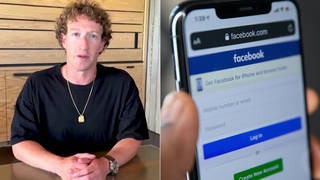
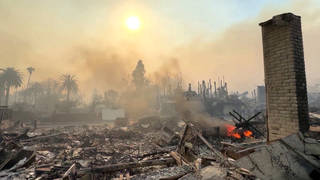
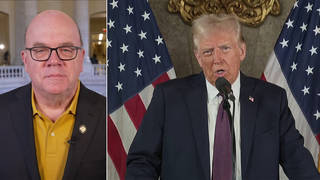




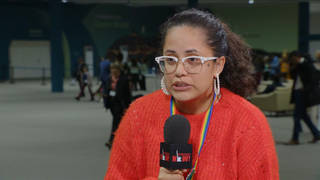

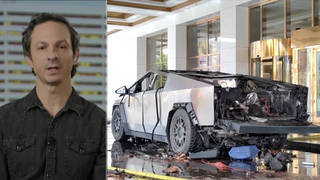
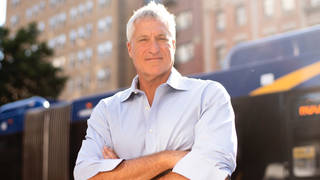
Media Options